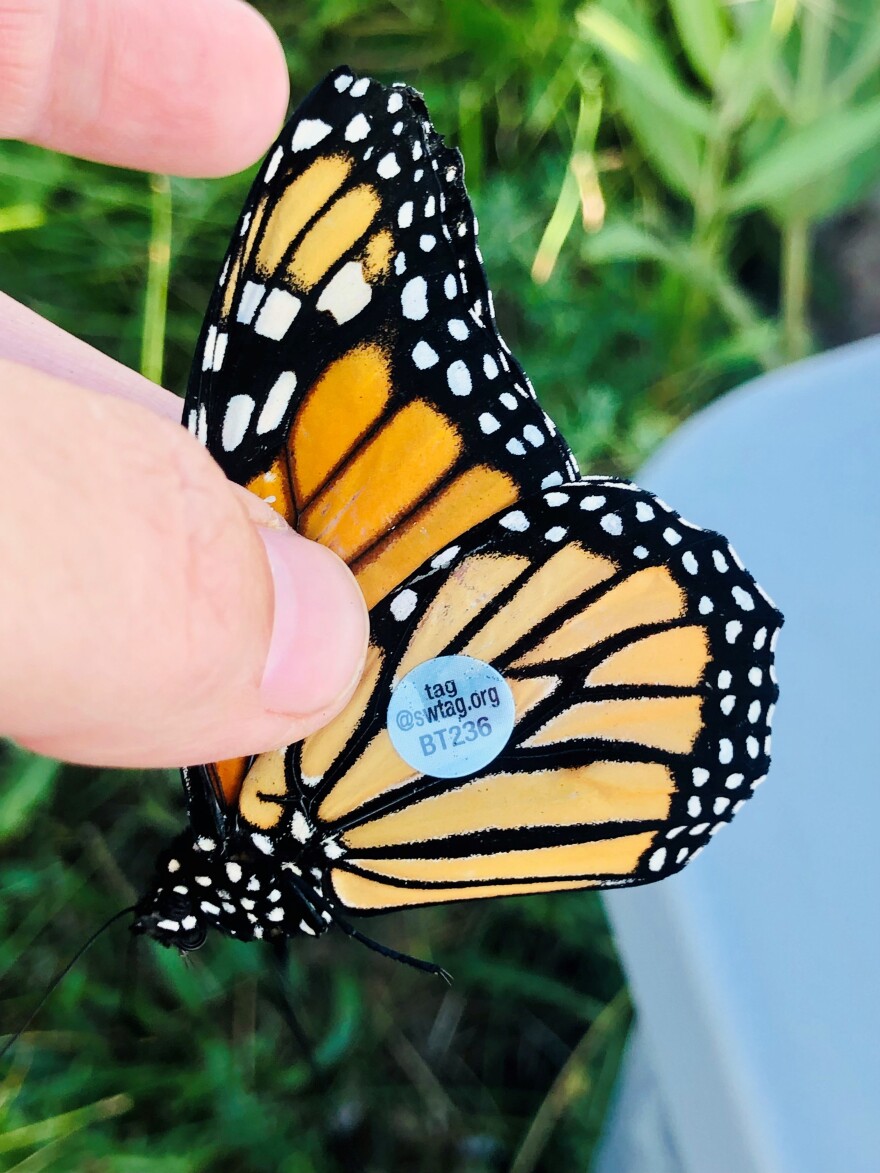This weekend, August 14, at Dinosaur National Monument, people can watch monarch tagging. As monarch butterflies migrate through Utah, scientists are tagging the butterflies to better track their movements and estimate their populations.
Every fall thousands of monarch butterflies migrate from North America to overwintering areas throughout Mexico. But their populations are shrinking. The monarch population has declined by 99% since the 1980s. As large pollinators, monarch butterflies play a crucial role in ecosystem health, making this decline particularly concerning.
Scientists use butterfly tracking to best track monarchs’ movements and estimate their populations. In Dinosaur National Monument this weekend, people can watch the butterflies get tagged.
In the Uintah Basin, biologists from the DWR, US Forest Service, the Bureau of Land Management, Dinosaur National Monument, NRCS, and Ouray National Wildlife Refuge, along with help from private landowners, have teamed up to find areas where monarchs congregate, and the trap, tag, and release the butterflies they find.
Natasha Hadden, one of the biologists with this collaborative group, explained reasons for monarch population decline.
“Some of the major threats identified for Monarchs are loss of nectaring plants, basically, flowering plants, logging at overwintering sites, use of insecticides, parasites, disease, predators and climate change," Hadden said. "Not only have monarch populations declined, but concurrently, the abundance and diversity and health of other pollinator taxa globally have declined.”
Tagging the butterflies includes affixing a tiny sticker to the underside of their wing. The sticker is small enough to not inhibit flying and gives each butterfly a unique ID.

Biologists from the monarch group are hosting an event this Saturday, August 14 where anyone can come and see monarchs up close at the historic Josie Morris Cabin in the dinosaur National Monument.
And for people outside the Basin interested in helping monarchs, Hadden had some tips that include limiting use of pesticides, planting native milkweed or planting a small pollinator plot in the backyard.
“There's many different things that we can do to help the monarch butterfly populations in our area in our own backyard,” Hadden said.



